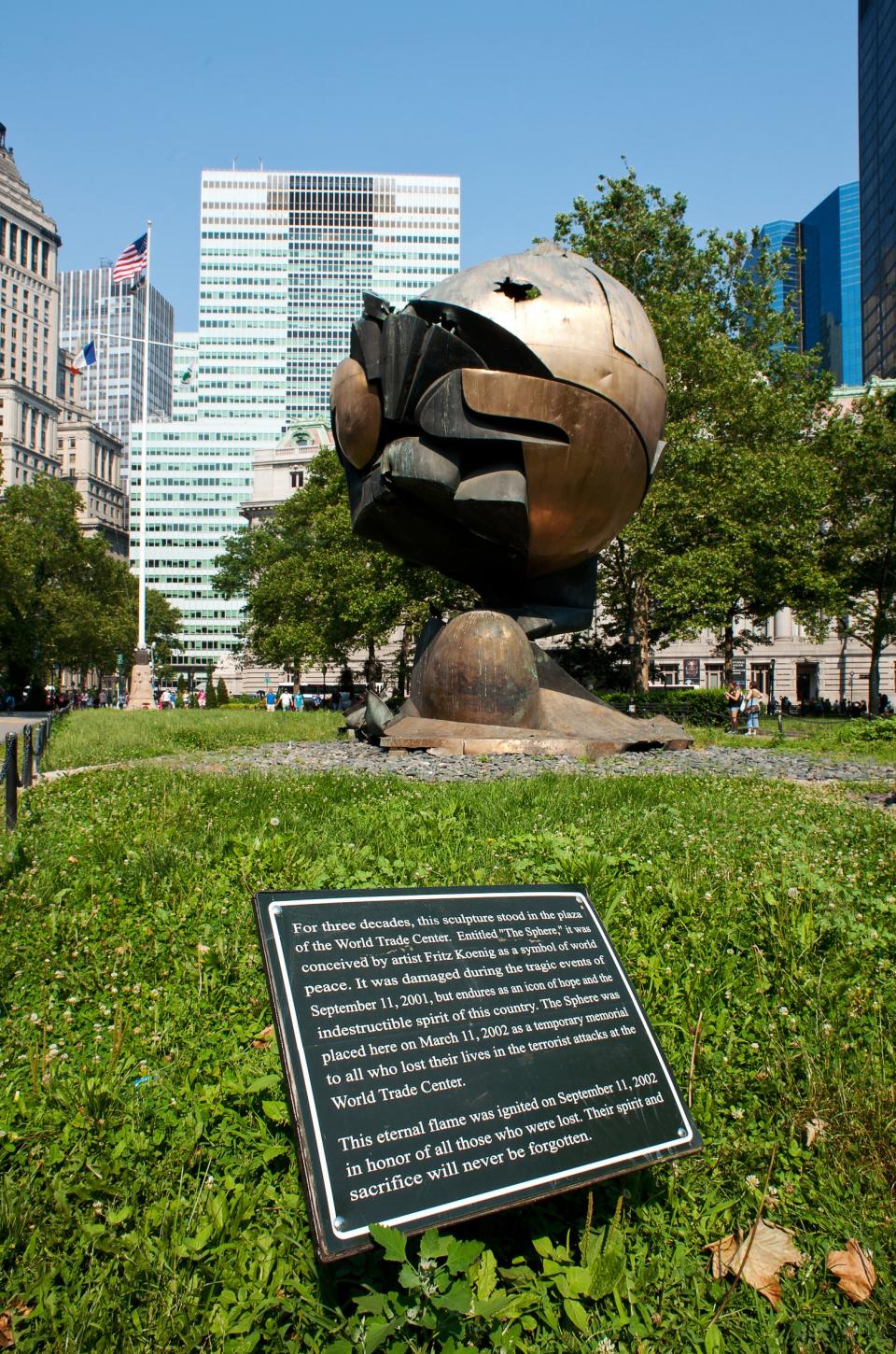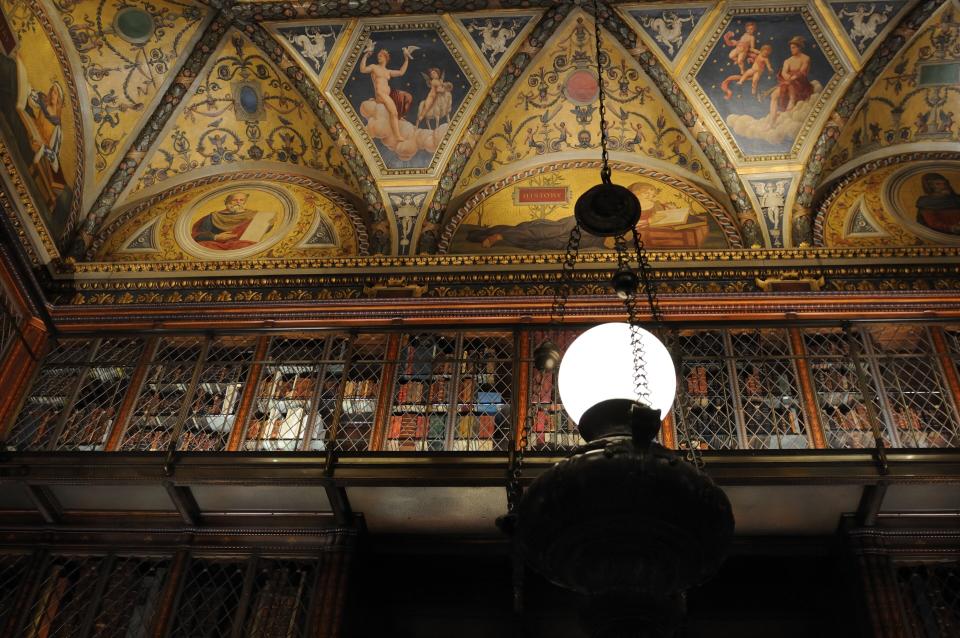Central Park's lost corner - and five more New York sights you didn't know about

New York is, by most definitions, the best-known city on the planet – a noisy, glittering metropolis where the skyscrapers are celebrities and every other street corner and broad avenue has cropped up in a blockbuster movie, an arthouse film or an iconic song lyric.
It is not, you might think, a place that still has any unknown corners or little mysteries.
But the Big Apple has thrown out a small surprise in the last week via the re-emergence of a section of Central Park which had been "lost" for more than eight decades.
The Hallett Nature Sanctuary sits on a stubby peninsula within The Pond – the croissant-shaped water feature which spills out in the south-east corner of the park. It is almost within visible range of both Fifth Avenue and 59th Street, but has lain hidden since 1934, when it was set aside as an enclave for migrating birds, and quickly reclaimed by nature.
A photo posted by Central Park Conservancy (@centralparknyc) on Apr 19, 2016 at 1:22pm PDT
It has been "rediscovered" as part of a $40m (£28m) reappraisal of some of Central Park's less appreciated areas, with new pathways being cut through the foliage, and a proper wooden gate being added as an entrance. It has been open to the public on three select afternoons a week since the start of this month, and will keep to these limited hours until the end of June – before switching over to a four-day-a-week schedule during July and August (full information on hours and dates can be found at centralparknyc.org).
The sanctuary is not huge – it takes up just four acres of the 843-acre whole that is New York’s main green lung. But its stepping back into the light has captured imaginations.

"The story is, Robert Moses closed it off because he wanted to turn it into a bird sanctuary," Douglas Blonsky of the park's administrative body, the Central Park Conservancy, told The New York Times. Moses was a city planner who was responsible for New York’s parks in the early Thirties. It seems the decision was taken around 1934.
To one extent, it worked. The area (which did not gain its official name until 1986) was quickly adopted as a safe haven by birds heading north or south depending on the season, seeking a leafy refuge in the big city. But unsuitable species which had been planted at the heart of The Pond – Norway maples, Japanese knotgrass, wisteria – soon took over.
"Wisteria was a huge problem," Mr Blonsky explains. "In a woodland, it will strangle everything, and that’s what was happening here."
The sanctuary received its official name in 1986 in tribute to George Hallett Jr, an ardent New York birdwatcher, but was otherwise treated as a very low priority on the park’s to-do list. It briefly made headlines during March 2006 when a coyote – subsequently christened "Hal" – was captured in the park after being spotted on the edge of The Pond.
A set of benches have also been added to a leafy zone which, having been an oasis for feathered wanderers for 82 years, may now offer the same service to human visitors.
Five other New York secrets
It's not that no-one has ever seen or heard of these less heralded slices of the Big Apple. It’s that international visitors have not, generally, happened upon them...
1. The Sphere
This bronze globe-like sculpture, crafted by the German artist Fritz Koenig in 1971, used to stand between the Twin Towers of the World Trade Center. It was plucked from the rubble in the wake of 2001's terrorist attack, and now stands in Battery Park, at the southern tip of Manhattan – a bruised, burned, misshapen memorial to the events of 9/11.

2. 6½ Avenue
You know where you are with the Manhattan grid – which is basically a series of whole numbers tagged to streets and avenues. With the exception of 6½ Avenue – a pedestrian arcade in Midtown, which, as its name suggests, lurks between Fifth Avenue and Sixth (the Avenue of the Americas). An official part of the map to the extent that it has its own signs, this commuter chicken run cuts a dash between 51st and 57th Streets. The New York equivalent of Harry Potter’s Platform 9¾ at King's Cross Station – except that it's real.
3. The Morgan Library
You do not travel to New York to go to the library. But you should in the case of the Morgan Library (themorgan.org). Founded as a private institution in 1906, and opened to the public in 1924, this temple of the written word – at 225 Madison Avenue and East 36th Street in Midtown Manhattan – is also an architectural mecca. Its modern entrance is a black-and-white cube, completed in 2006 by Italian visionary Renzo Piano. Its star attraction is its original kernel, the McKim Building – a Classical Revival masterpiece whose interior is richly adorned with frescoes and murals. Its manuscript collection includes scraps of paper on which Bob Dylan penned the lyrics to Blowin' In The Wind.

4. Marcus Garvey Park
A green pocket which, at just 20 acres, is far smaller than its near neighbour Central Park, Marcus Garvey Park (nycgovparks.org) is nonetheless significant enough that it blocks Fifth Avenue where New York’s key thoroughfare forges through Harlem. Surrounded by evocative brownstone houses, this diminutive open space is also home to the Richard Rogers Amphitheatre, which stages performances in summer. This continues a trend. In 1969, the park hosted the Harlem Cultural Festival – a series of concerts which came to be known as the "Black Woodstock". Stevie Wonder, BB King and Nina Simone played.
5. Highland Park
Few tourists venture so far east into Brooklyn that they approach the borough border with Queens. But if they do, they may chance upon Highland Park (nycgovparks.org), a New York lung awash with cycling, jogging, picnicking locals – a weekend hotspot which curls itself around the Ridgewood Reservoir. You would not know, seeing it on a sunny day, that the park was the scene of the Battle of Brooklyn – a fierce showdown, fought on August 27 1776, between British and American troops, as the fledgling USA's bid for independence picked up speed. Britain won the battle but – of course – rather lost the war.
Read more: The best hotels near Central Park

